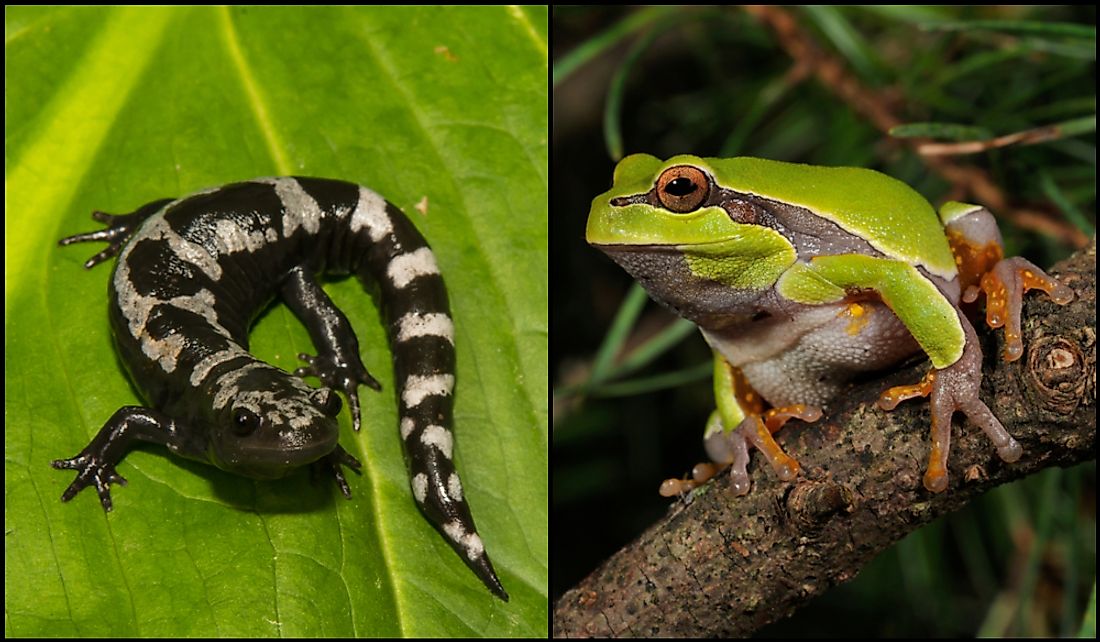What Is The North Carolina State Amphibian?

North Carolina is a US state that is located in the country’s southeastern section. North Carolina has an area of about 53,819 square miles, which makes it the 28th largest state. North Carolina became the 12th state to be admitted to the union on November 21, 1789. Since then, the state has designated several state symbols, including the state flag, the dogwood blossom as the state flower, and the Plott hound as the state dog. North Carolina has also chosen to designate two amphibians as state symbols. The Pine Barrens treefrog is the state frog and the marbled salamander is the state salamander.
Designating the North Carolina State Amphibians
North Carolina has designated two state amphibians. The marbled salamander (Ambystoma opacum) was chosen to be the state salamander in 2013. The salamander was chosen after a campaign led by teenager Rachel Hopkins from Raleigh. The same teenager was also responsible for driving the choice of the second amphibian, the Pine Barrens tree frog (Hyla andersonii) as the state treefrog. Hopkins worked together with the North Carolina Herpetological Society in choosing the two amphibians in a bid to raise awareness about amphibian conservation.
North Carolina State Salamander: Marbled Salamander
This salamander has unique and beautiful bands on a stocky body, which can have lengths of up to 4 inches. The bands are usually white for males while the females’ are typically gray. These creatures are extremely secretive and prefer to hide most of the time. Their preferred habitats include damp woodlands with wet and soft soil. Unlike other salamanders, they are not poisonous. Due to their large numbers, they are classified as creatures of least concern.
Adults mainly feed on things like eggs, larvae, worms, mollusks like snails and slugs, and other meals. The young ones feed on smaller aquatic animals. The creatures’ eggs usually hatch earlier than most of the other salamander eggs. The young ones typically reach maturity anywhere between two and six months depending on the location. Just like other salamanders in their genus, marbled salamanders have a lifespan of anywhere between eight and ten years.
North Carolina State Frog: Pine Barrens Treefrog
The Pine Barrens treefrog grows to lengths of anywhere between 1 and 3 inches, which makes it one of the smallest tree frog species. Their bodies are mostly green with dark stripes. In addition, they may have some orange-gold marks on the parts of their legs that are hidden. The frog looks very similar to the American green tree frog. The only difference between the two is a lavender stripe with white borders on the Pine Barrens tree frog. Due to their dwindling numbers, they are currently classified as near threatened by the IUCN.
In Northern Carolina, they are found in the Coastal Plains and Sandhills regions. Even the name “pine” takes up the name of the pine tree, which is one of the state’s signature trees. This frog prefers to live in habitats with a thick moss floor in bushy regions, shallow ponds, and close to peat bogs. Even though adults are terrestrial, they mostly live close to water. Females lay their eggs in shallow ponds that have slightly acidic water.











